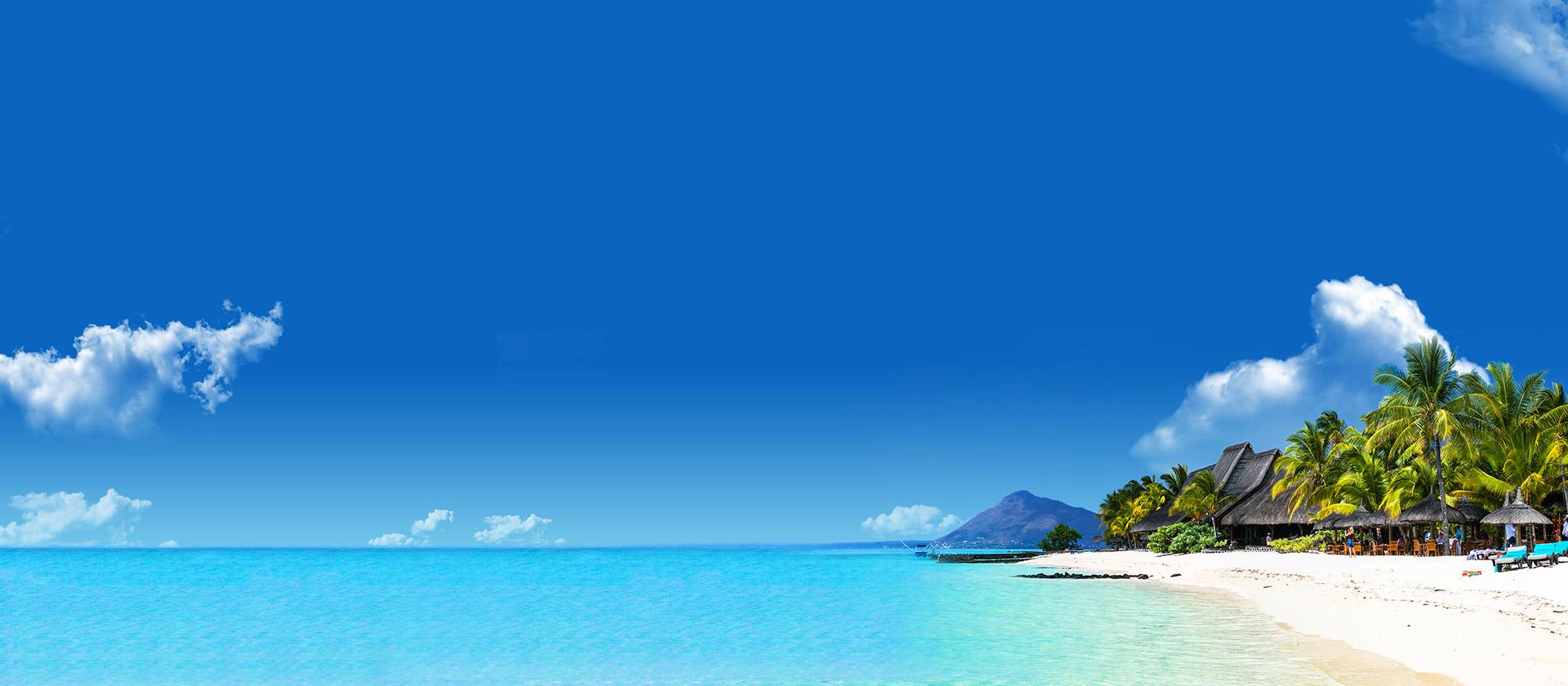History & Mauritius Today
Mauritius Before Human Settlement
Mauritius had no indigenous population predating the European colonisers, so its history is largely free of episodes of brutality, at least until the advent of slavery. This historical context is key to understanding the country’s culture of tolerance and its acceptance of all people; no-one in the ethnic melting pot is able to claim precedence over the others.
The First Humans on Mauritius
Due to a lack of documentation from the first period of the island’s discovery, it can be hard to determine which events occurred and when. It is said that the Arabs were the first to reach the island, in the 10th century, naming the island Dina Arobi (the Isle of Desolation). It is also said that they were followed by tribes of Malays, but there is very little information available about this period in time.
The Portuguese
After the Arabs and Malays, the Portuguese seaman Domingo Fernandez Pereira sighted Mauritius in 1507 and named it the ‘Ilha Do Cerne’ (the Island of the Swan). Five years later, the islands were visited by Dom Pedro de Mascarenhas, who used the name Mascarene for the whole region. However, the Portuguese took no interest in these isolated islands, and so never really settled there.
The Dutch
In 1598, a Dutch expedition on its way to the Indian subcontinent ran into foul weather, so some sailors landed on the south-east coast of Mauritius. They decided to name the island after Prince Maurits of the House of Nassau, the stadtholder of most of the Dutch Republic at the time. The name Mauritius has remained ever since.
At first, the Dutch did not occupy the island, but rather used it as a stopover after long months at sea, as well as a supply base for Batavia (Java). They regularly visited it, benefitting from its raw materials, including ebony and wild animals.
The first Dutch settlement dates to 1638, and was mainly put there to prevent the French or British from occupying the island. The Dutch aimed to develop the commercial potential of the island and, with this goal in mind, they imported a few hundred slaves from Madagascar. These were tasked with exporting ebony, as well as supplying the settlers and passing Dutch ships with food and produce. Numerous governors were appointed throughout this period, but continuous hardships such as cyclones, droughts, pest infestations, lack of food, and illnesses finally took their toll, and the island was definitively abandoned in 1710.
The Dutch Legacy
- Providing the name for the country, as well as many of its regions.
- Introducing sugar cane plants from Java.
- Introducing slavery to the island.
- Decimating the local dodo and giant tortoise populations for food; introducing competing species and pests.
- Clearing large swaths of forests for ebony bark exploitation.
The French
For some years following the Dutch departure, Mauritius remained unoccupied. In 1715, Captain Guillaume Dufresne D’Arsel occupied the island for France, giving it the name ‘Île de France’. However, the island only really started to develop effectively after the arrival in 1735 of French governor Mahé de Labourdonnais.
During his governorship, he transformed Port Louis into a thriving seaport; he built roads, infrastructure, and numerous buildings, many of which are still standing today. Sugar, indigo, cotton, and tobacco plantations were set up, and an adequate labour force was imported from India. From this strategic position in the Indian Ocean, the French were able to plague British vessels on their way to and from India.
Because of its strategic position, Great Britain had its eyes set on the Île de France. In 1810, the British landed on the island’s northern shores with a fleet of 70 ships carrying 10,000 troops. Over the years, British spies had already gathered a lot of intelligence, so by the time of their invasion, the British already possessed details maps of the island. The French, with only 2,000 troops on reserve, were greatly outnumbered, and capitulated on 3 December 1810.
The French Legacy
- Roads, buildings, the harbour, infrastructure
- Multiethnic population
- More foreign animal and plant species were introduced, damaging the local ecosystem forever
- French language is introduced
The British
The Île de France was formally given to Britain as part of the Treaty of Paris in 1815, and was renamed Mauritius. The new British rulers allowed the Franco-Mauritians to retain their language, religion, and legal systems.
Rapid social and economic changes took place during his time, of which one of the most important was the abolition of slavery in 1835. Approximately 70,000 slaves who had been brought to the island from Africa and Madagascar during the French occupation were finally freed.
The abolition of slavery led to the mass importation of indentured labourers to work the fields, largely from India (some workers also came from China). Their working conditions were, in many respects, not so different from the appalling working conditions of the slaves that preceded them. Many Indian labourers eventually settled in Mauritius, and their descendants constitute the majority of the population nowadays.
Because so many Indians moved to Mauritius to work, they also gradually achieved a greater say in how the country was run. Their struggle was given extra impetus when Indian political and spiritual leader Mahatma Gandhi visited Mauritius in 1901 to push for civil rights. However, the key event was the introduction of universal suffrage in 1959, and the rise of key figure Dr (later Sir) Seewoosagur Ramgoolam. Having founded the Labour Party in 1936, Seewoosagur Ramgoolam led the fight for independence from Britain, which was finally granted in 1968.
The British Legacy
- Extensive Indian population on Mauritius
- Abolition of slavery
- Universal suffrage
- Eventual independence in 1968
Independence
Mauritius achieved independence on 12 March 1968, adopting a constitution based on the British parliamentary system, and retaining Queen Elizabeth II as their monarch. After years of planning and hard work by the newly-independent country, Mauritius achieved economic and political stability, and changed its status to that of a republic 24 years later, on 12 March 1992. The foundations of independence ensured that Mauritius thrived moving into the 21st century.
Mauritius Today
Today, Mauritius enjoys a stable political scene, a steady economy that managed to weather the global financial crisis unscathed, and an excellent record of peaceful transition of power, with free and fair elections taking place on a regular basis. When Mauritius became independent in 1968, the country had few resources beyond sugar cane. Since then, Mauritius has developed a diverse economy based on tourism, textiles, sugar, and financial services. In recent years, information and communication technology, seafood, hospitality and property development, healthcare, renewable energy, and education and training have also emerged as important sectors for the Mauritian economy, attracting substantial investment from both local and foreign investors.
Tourism has played a major role in Mauritius’ economic prosperity for decades, and nowadays it also plays an important role in boosting programmes to restore habitats and assist in the recovery of endangered species. Many efforts are made to keep tourism on the island sustainable and to prevent it from damaging the local ecosystems.




